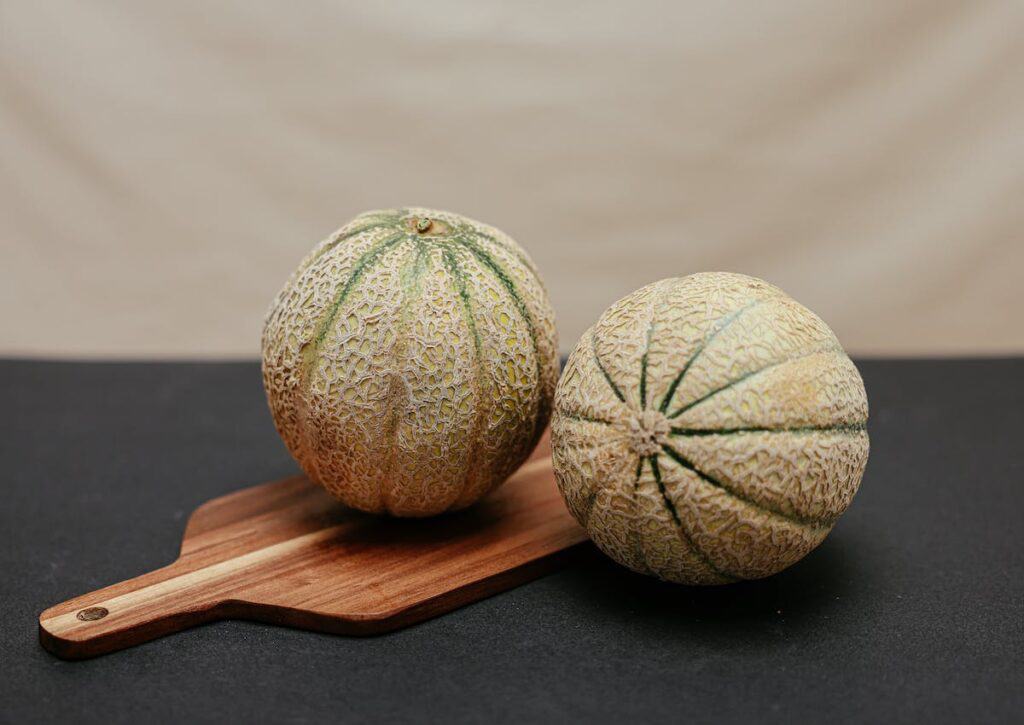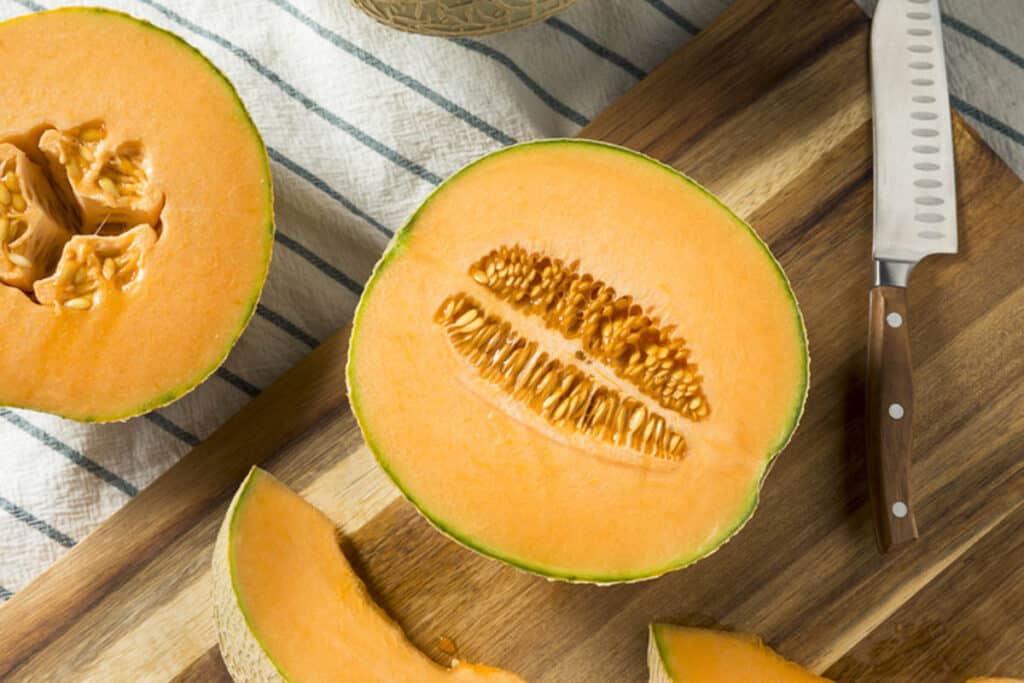Cutting a cantaloupe doesn’t have to be a slippery, messy ordeal. With the proper technique, you’ll slice through this juicy fruit like a pro, ready to indulge in its sweet, refreshing taste. Whether prepping a fruit salad or simply craving a delicious snack, mastering the art of how to cut a cantaloupe will make enjoying this summer fruit a whole lot easier.

How to tell if a cantaloupe is ripe
Choosing a nicely ripe cantaloupe is the first step in the process. There are a few simple ways to gauge a melon’s ripeness:
- Look for a cantaloupe with prominent webbing, no stem attached and a slightly flattened side that’s paler than the rest of the fruit.
- Avoid melons with any discolored or soft spots.
- When pressed gently with a finger, there should be a slight give.
- Smell the melon. There should be a distinct fragrance. If you don’t smell anything, the melon is not ripe.
- Cantaloupes should be firm and feel heavy for their size.
Filled with appetizers, salads, sides, mains and desserts, Food Drink Life's cookbook will become your favorite!
- Easy and delicious recipes from a variety of top chefs and recipe developers.
- Bright, colorful pictures on every page.
- Printer-friendly recipes that you can download instantly to your device.
- Printable shopping list and a kitchen conversion sheet.
If your melon doesn’t meet these requirements, leave it on the counter at room temperature to sit and ripen for a few days until it’s ready to be cut. Once the cantaloupe is ripe and ready to be cut, wash the exterior well to remove any potential bacteria or microbes on the skin from contaminating the fruit via the knife.
“For me, the main indicator of a ripe cantaloupe is a strong sweet smell. I don’t really trust any other methods, as I’ve had a fair share of disappointment with most of them. Unripe cantaloupes don’t taste good, so if it doesn’t have a strong smell, I opt not to purchase it.”
— Tamara, Thriving In Parenting
How to peel and cut a cantaloupe
You’ll need a clean, flat working surface and a sharp knife to cut a cantaloupe properly. To begin, slice off the bottom and top ends and discard. Stand the melon upright on one of the flat ends. At this point, there are two options:
- Slice off the peel before cutting the cantaloupe.
- Slice the cantaloupe, then remove the peel.
Option 1
Grab your knife and carefully slice away the outer skin of the melon, unveiling the juicy flesh while keeping to its spherical shape. Toss the skin aside. Next, halve the exposed melon lengthwise or crosswise, using a spoon to scoop out and discard the seeds from the center. From this point, the melon can be sliced thinly, cut into wedges or chopped into bite-sized chunks.
Pro tip — Don’t toss the seeds. Just like winter squash, the seeds of a cantaloupe can be saved and roasted.

Option 2
Instead of tackling the skin first, some people prefer to leave it intact at the beginning. For this approach to slicing a cantaloupe, halve the melon crosswise or lengthwise, then scoop out the seeds from the center using a spoon, similar to the earlier method, except the skin remains on. Dispose of the seeds.
This option is best If you’re looking to create melon balls. Grab a melon baller or teaspoon and carve out the flesh until you reach the skin. Melon balls make an excellent garnish for a drink like a cantaloupe lime agua fresca or a chilled melon soup.
To cut the melon into pieces with the peel still on, slice the melon halves into wedges by halving one section, then quartering each half, continuing until you achieve your preferred wedge size. These wedges are good to go for snacking as they are.
If you plan to incorporate the cantaloupe into a recipe — like a salad or a drink — you’ll want to remove the rind. Lay a wedge rind side down on your work surface. Carefully slide it between the fruit and the rind using a sharp knife. Follow the curve of the wedge as you slice along the skin. Dispose of the peel. Now, the cantaloupe wedge can be cut into chunks or shaped however desired.
“I cut the melon in half and lay it on its side. Using a good sharp knife, I slowly cut the rind off until the melon is exposed. Then, cut the melon into thick slices, cut the slices into strips and cut the strips into cubes.”
— Jere’ Cassidy, One Hot Oven

How to store cantaloupe
Like other melons, cantaloupes are perishable, so store them in a cool, dry spot. If you spot softness or sunken areas, pop it into the fridge and use it within a day or two.
Once the cantaloupe is cut, refrigerate it for up to 5 days. Opt for an airtight container to maintain its freshness. Before enjoying, sniff it to ensure the cantaloupe is still good, even when stored properly. If it feels slimy or smells funky, it’s time to toss it.
Even if your already-cut cantaloupe isn’t ripe, refrigerate it immediately. While it might soften in a day or two, the taste won’t change.
How to freeze cantaloupe
Cantaloupe cut into chunks freezes the best. Because the texture of the melon changes slightly with thawing, smoothies are one of the better uses of frozen cantaloupe. To freeze, place the chunks in an airtight and freezer-safe container for up to 6 months.
Conclusion
Mastering how to cut a cantaloupe opens the door to a world of delicious possibilities. From refreshing snacks to vibrant additions in salads or drinks, this versatile fruit brings sweetness and flavor to the table. Armed with the proper techniques to select, prepare and store this juicy gem, you can enjoy its freshness in various ways.
Gina Matsoukas is the writer, photographer and recipe creator of Running to the Kitchen. Focusing on healthy, seasonal, whole-food recipes, her work has been featured in various online and print publications including Food Network, Prevention Magazine and Women’s Health. Gina lives in central New York, where she enjoys an active outdoor life.
